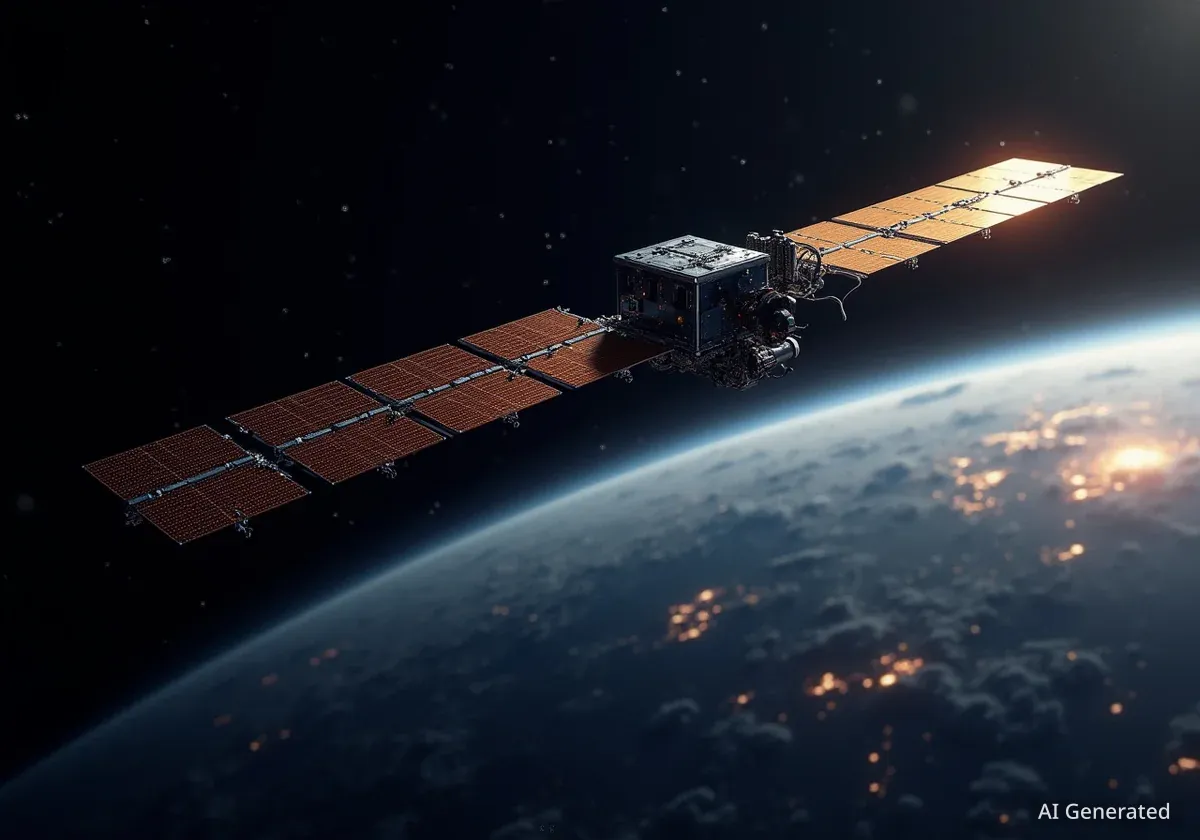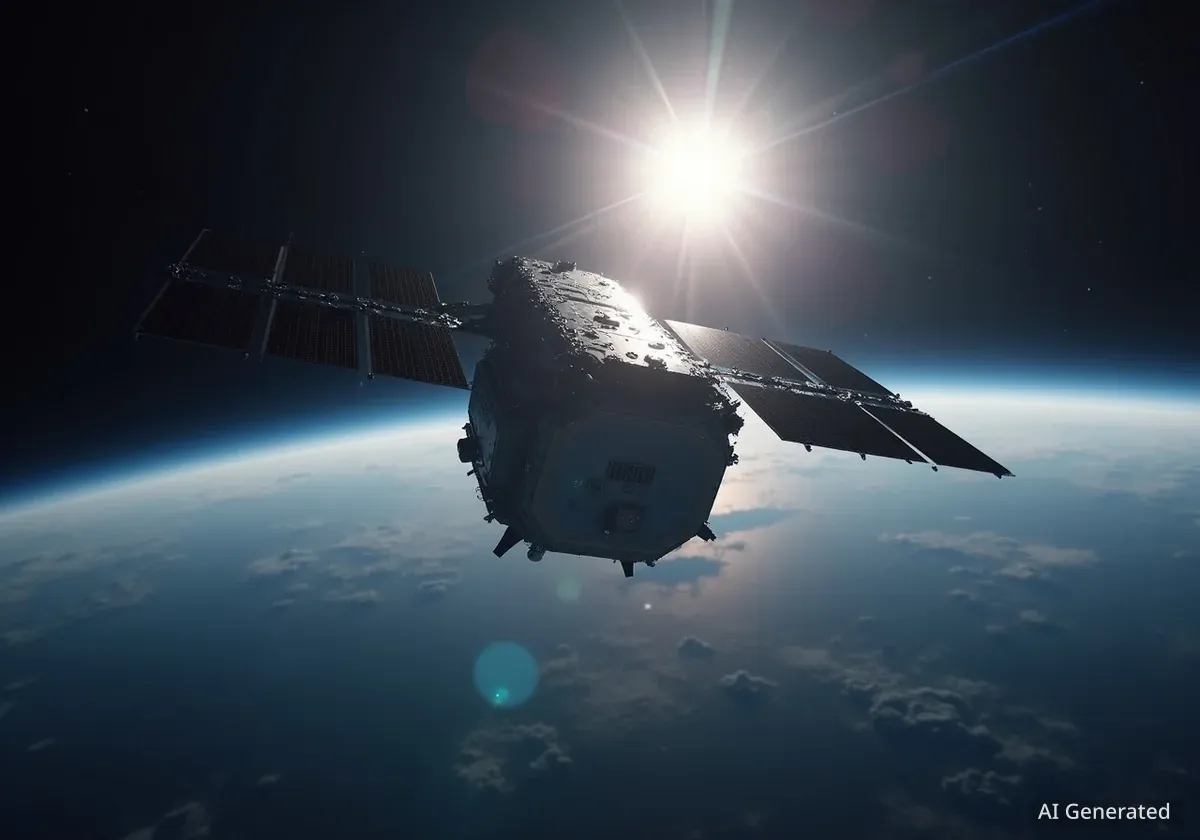Global technology firm Thales has introduced a new space surveillance radar system named AURORE, designed to monitor the increasingly congested environment of Low Earth Orbit (LEO). Unveiled on October 29, 2025, the system aims to provide real-time tracking of space objects, addressing the growing risks posed by debris and other threats to operational satellites.
Operating in the Ultra High Frequency (UHF) band, AURORE is engineered to detect and track multiple small objects simultaneously. This capability is intended to enhance situational awareness in space, a critical component for both civilian and military operations, and to bolster national sovereignty in space monitoring.
Key Takeaways
- Thales has launched AURORE, a new UHF space surveillance radar.
- The system provides real-time, simultaneous tracking of multiple objects in Low Earth Orbit.
- AURORE is designed to counter threats from space debris and military activities.
- The radar strengthens France's space monitoring capabilities and is described as the only one of its kind in Europe.
- Its modular design allows for future expansion to counter ballistic and hypersonic threats.
A Response to an Increasingly Cluttered Orbit
The region of space known as Low Earth Orbit is becoming progressively more crowded. Thousands of active satellites, alongside a much larger number of defunct satellites and fragments from past collisions, orbit the Earth at high speeds. This proliferation of space debris presents a significant and growing danger to essential infrastructure, including communication, navigation, and Earth observation satellites.
Any collision in orbit can create thousands of new pieces of debris, triggering a chain reaction that could render certain orbital altitudes unusable. Protecting active satellites from these hazards requires precise and continuous monitoring of the space environment. The ability to identify small objects and accurately predict their trajectories is fundamental for collision avoidance maneuvers.
Beyond debris, the strategic importance of space has also led to an increase in potential military threats. The ability to monitor the activities of other objects in orbit is a key element of national security and space sovereignty. Systems that can provide a clear picture of the orbital environment are therefore in high demand.
What is Low Earth Orbit (LEO)?
Low Earth Orbit is generally defined as the area in space extending from about 160 kilometers (100 miles) to 2,000 kilometers (1,200 miles) above the Earth's surface. It is the most common destination for satellites due to its proximity to the planet, which allows for high-resolution imaging and low-latency communications. The International Space Station and numerous satellite constellations, such as those for internet services, operate in LEO.
Technical Capabilities of the AURORE System
The AURORE radar is a software-defined system, which means its functionality can be updated and reconfigured through software changes rather than hardware modifications. This provides flexibility to adapt to new and evolving threats over time. It operates in the UHF band, a frequency range well-suited for detecting and tracking objects in space.
One of the system's primary features is its capacity for simultaneous multi-tracking. Unlike some older radar systems that can only focus on one object at a time, AURORE is designed to follow numerous space objects concurrently. This allows it to generate a comprehensive, high-resolution picture of the space environment in real-time.
According to Thales, the radar provides a fast responsiveness time for objects in LEO, which is crucial for timely warnings and potential evasive actions. The company has also emphasized the modularity of AURORE's architecture, suggesting it will serve as a foundation for a new family of UHF radars.
AURORE System Profile
- Type: Software-Defined Radar
- Operating Band: Ultra High Frequency (UHF)
- Primary Function: Continuous space surveillance and multi-object tracking
- Target Orbit: Low Earth Orbit (LEO)
- Key Feature: Real-time generation of high-resolution space environment data
Strengthening European Space Sovereignty
The development of AURORE is a significant step for European space monitoring capabilities. Thales has positioned the radar as the only one of its kind in Europe, directly contributing to France's strategic autonomy in space. By providing an independent means of tracking objects, the system reduces reliance on data from other nations or entities.
In a statement regarding the launch, Patrice Caine, Chairman and Chief Executive Officer of Thales, highlighted the system's importance.
“With AURORE, the only radar of its kind in Europe, Thales is contributing to French sovereignty by strengthening its capabilities for monitoring the space environment at low orbits. AURORE demonstrates, once again, Thales’ leadership in the field of air and space surveillance systems.”
This sovereign capability is not just about tracking debris. It is also about maintaining an independent watch over a domain that is critical for modern economies and defense structures. The ability to monitor objects without external assistance is a cornerstone of a robust national space strategy.
Future Applications and Expansion
Thales has indicated that AURORE is the first in a planned portfolio of advanced radar systems. The modular architecture of the radar is designed to be scalable and adaptable for a variety of critical missions. The company's roadmap includes expanding this technology to address other high-level threats.
Specifically, the underlying technology is intended to be adapted for the detection and tracking of emerging ballistic and hypersonic threats. These types of weapons travel at extreme speeds and on complex trajectories, making them difficult to track with conventional defense systems. A powerful, responsive ground-based radar network is a key component in developing a defense against them.
This forward-looking approach suggests that the investment in AURORE is part of a broader, long-term strategy to develop a comprehensive suite of surveillance and defense technologies. As threats in both space and the upper atmosphere evolve, systems built on this flexible architecture could become increasingly vital for national and international security.





